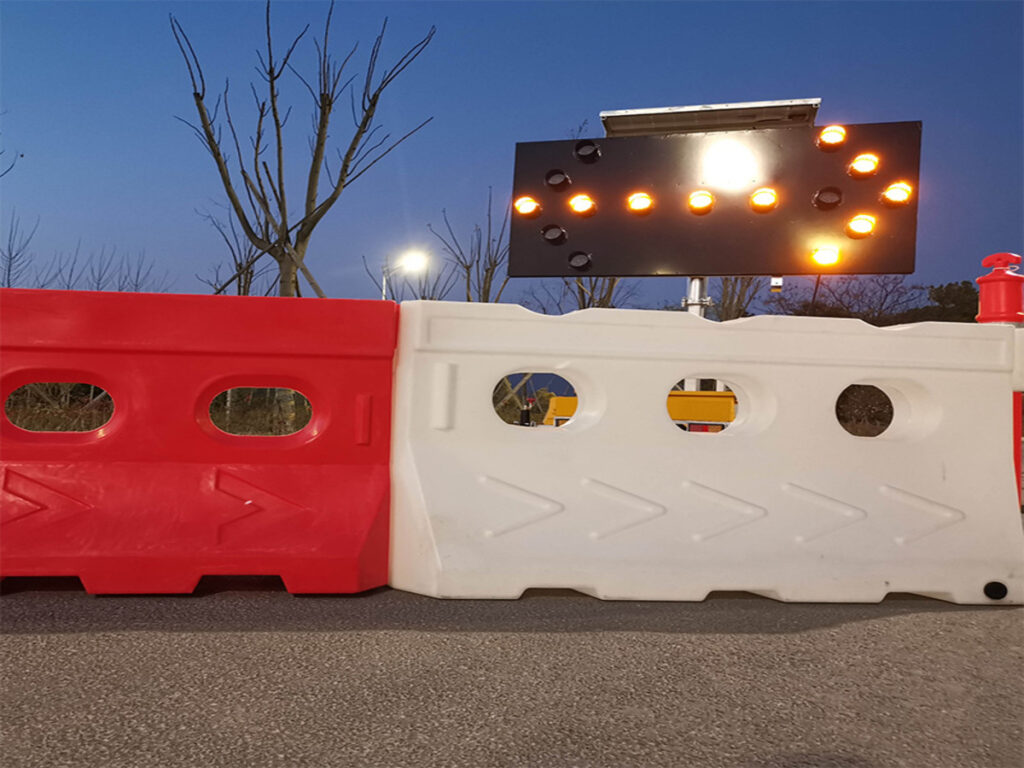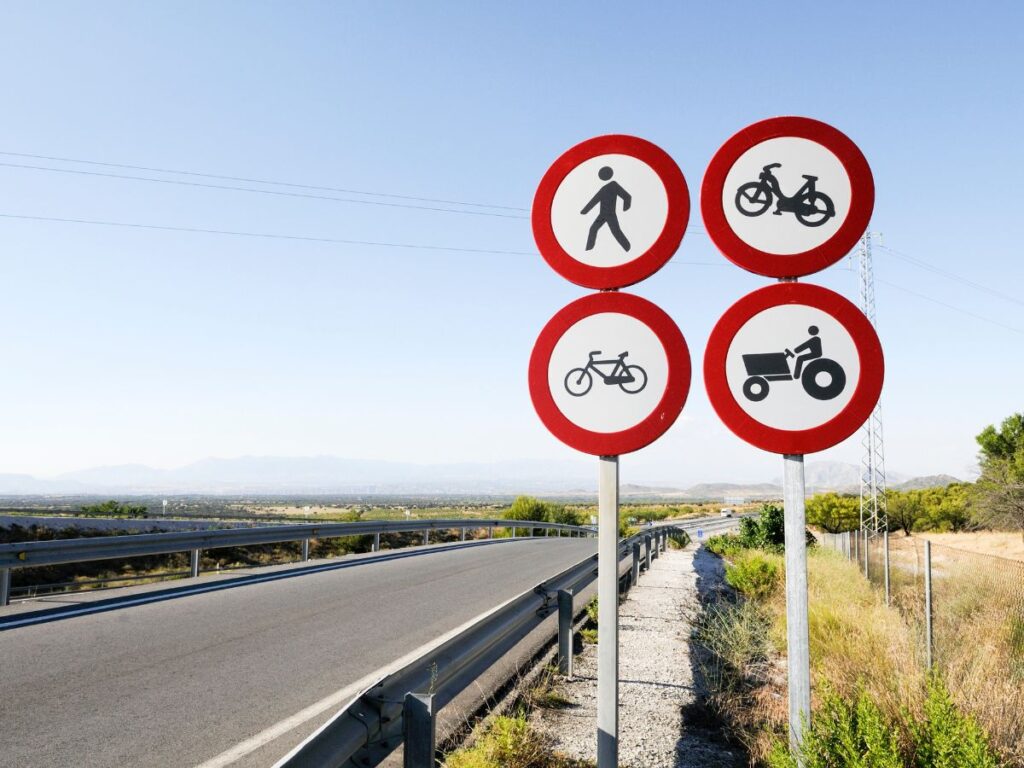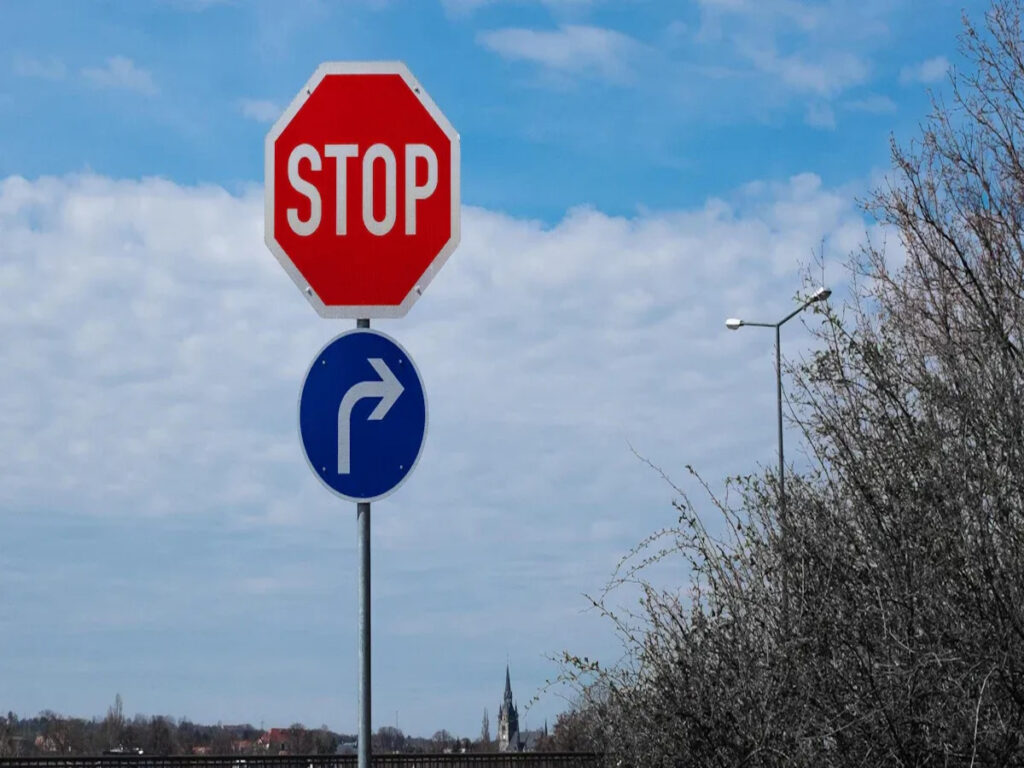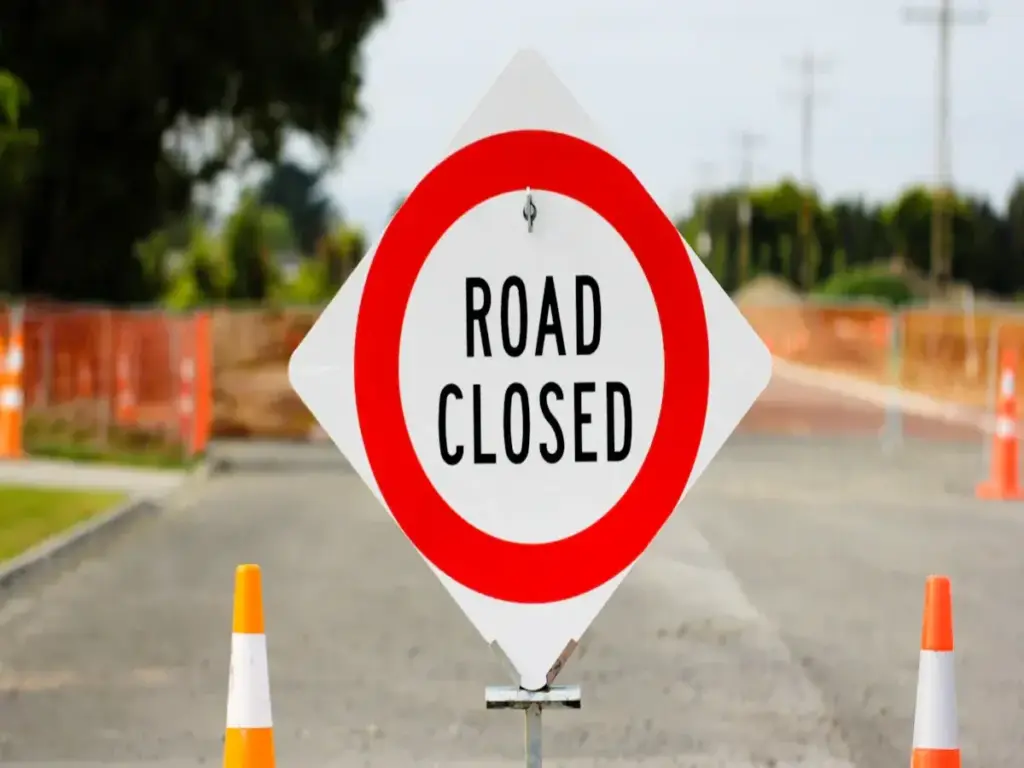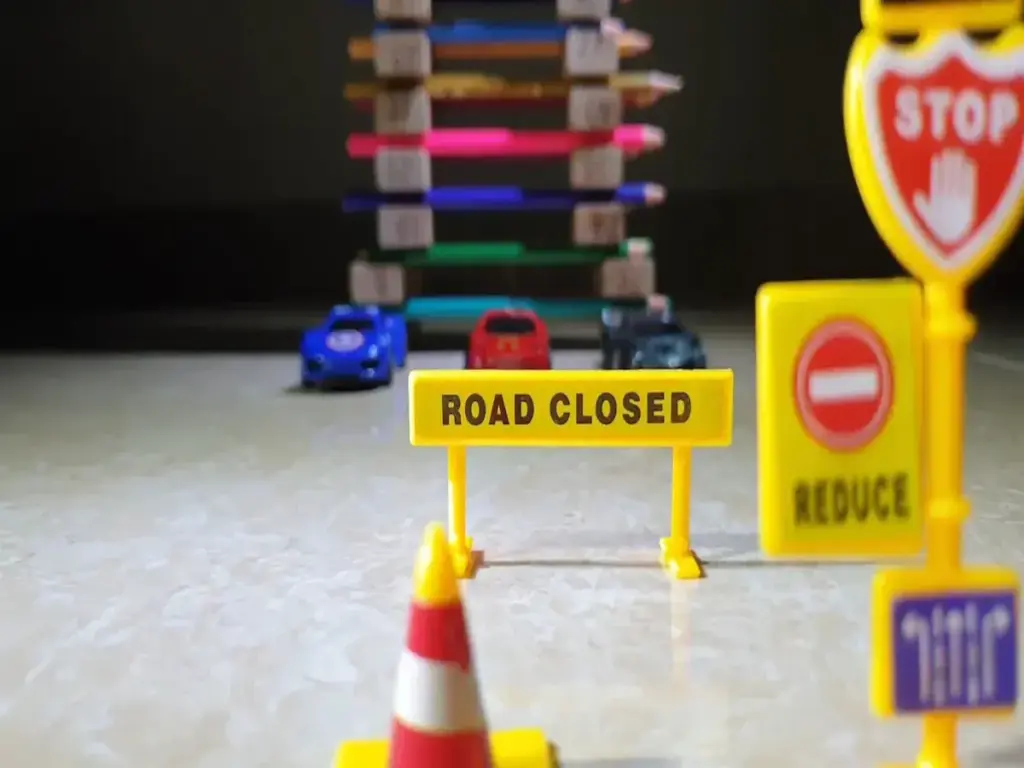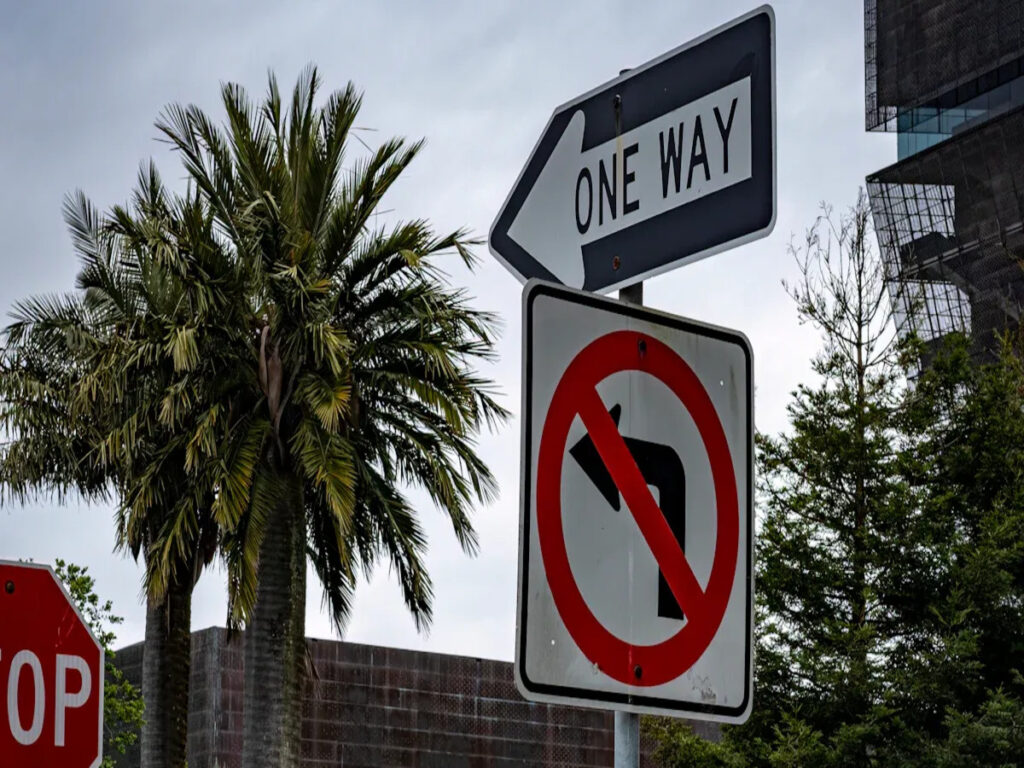
स्पष्ट सड़क यातायात संकेत सभी ड्राइवरों को नियमों को जानने में मदद करते हैं. वे ऑस्ट्रेलिया में सड़कें भी सुरक्षित बनाते हैं. ट्रैफ़िक सिग्नल जो अनुसरण करते हैं 4797-2006 हर जगह समान हैं. इन संकेतों ने दुर्घटना दर को कम कर दिया है 50% कुछ स्थानों पर. NSW और विक्टोरिया एक दूसरे के बगल में हैं. लेकिन वे विभिन्न नियमों और मानकों का उपयोग करते हैं. जब लोग विक्टोरिया में ड्राइव करते हैं, वे अलग -अलग ट्रैफ़िक संकेत देख सकते हैं. नियम भी अलग हो सकते हैं. ये परिवर्तन प्रभावित कर सकते हैं कि ड्राइवर नियमों का पालन कैसे करते हैं. राज्य की सीमाओं को पार करते समय यह महत्वपूर्ण है. सड़क सुरक्षा सभी को सही यातायात संकेतों को जानने और पालन करने की जरूरत है.
ओप्ट्राफिक पर, हम यह सुनिश्चित करते हैं कि हमारे सभी बिक्री के लिए यातायात संकेत आवश्यक मानकों को पूरा करें, इस तरह से 4797-2006, सड़क सुरक्षा और अनुपालन में सुधार करने के लिए. चाहे आप NSW में ट्रैफ़िक का प्रबंधन कर रहे हों, विक्टोरिया, या कोई अन्य राज्य, हमारे संकेतों को सभी को सड़क पर रखने और सुरक्षित रखने में मदद करने के लिए डिज़ाइन किया गया है. अपने सभी सड़क सुरक्षा आवश्यकताओं के लिए विश्वसनीय ट्रैफ़िक संकेतों की हमारी सीमा का अन्वेषण करें.
चाबी छीनना
- न्यू साउथ वेल्स (TFNSW) और विक्टोरिया (विक्रेता) राष्ट्रीय यातायात हस्ताक्षर मानकों का उपयोग करें. वे अपनी जरूरतों को पूरा करने के लिए संकेत और नियम बदलते हैं. यह कुछ अंतर बनाता है कि कैसे संकेत दिखते हैं और नियम कैसे लागू होते हैं.
- ड्राइवरों को ट्रैफ़िक संकेतों और गति सीमाओं में परिवर्तन की तलाश करनी चाहिए. यह NSW- विक्टोरिया सीमा को पार करते समय महत्वपूर्ण है. यह ड्राइवरों को जुर्माना से बचने में मदद करता है और उन्हें सुरक्षित रखता है.
- दोनों राज्य ऐसे संकेतों का उपयोग करते हैं जो स्पष्ट और पढ़ने में आसान हैं. संकेतों में चिंतनशील सामग्री और इलेक्ट्रॉनिक अपडेट हैं. यह ड्राइवरों को सभी परिस्थितियों में संकेतों को बेहतर देखने में मदद करता है.
- स्कूल जोन और निर्माण क्षेत्रों में प्रत्येक राज्य में विशेष नियम हैं. NSW छुट्टियों के दौरान भी स्कूल ज़ोन की गति सीमा का उपयोग करता है. विक्टोरिया निर्माण साइन आकार अधिक लचीला होने देता है.
- दोनों राज्यों में स्मार्ट ट्रैफ़िक प्रौद्योगिकियां बनाई जा रही हैं. इनमें इंटेलिजेंट स्पीड असिस्ट और एडेप्टिव ट्रैफ़िक सिस्टम शामिल हैं. वे सड़कों को सुरक्षित बनाने और यातायात प्रवाह में सुधार करने में मदद करते हैं.
नियामक निकाय
TFNSW अवलोकन
NSW के लिए परिवहन TFNSW कहा जाता है. यह न्यू साउथ वेल्स में सड़कों और परिवहन की देखभाल करता है. TFNSW राज्य में सड़क यातायात संकेतों के लिए नियम निर्धारित करता है. यह उपयोग करता है ऑस्ट्रेलियाई मानक के रूप में 1742 इन नियमों के लिए. यह मानक बताता है कि क्या आकृतियाँ हैं, रंग, और उपयोग करने के लिए प्रतीक. कभी-कभी, TFNSW NSW की जरूरतों के लिए नियमों को बदलता है. सिडनी में संकेत देश में संकेतों से अलग दिख सकते हैं. TFNSW चेक यदि सभी संकेत सुरक्षित हैं. जब कानून या सड़कें बदलती हैं तो यह संकेतों को अपडेट करता है. TFNSW संकेतों को स्पष्ट रखने के लिए परिषदों के साथ काम करता है. NSW में ड्राइवर राष्ट्रीय और स्थानीय दोनों नियमों का पालन करने वाले संकेत देखते हैं.
Vicroads अवलोकन
विक्रेता विक्टोरिया में सड़कों का प्रभारी है. यह विक्टोरिया में सड़क संकेतों के लिए नियमों को बनाता है और जांचता है. Vicroads ऑस्ट्रेलियाई मानक का उपयोग करता है 1742 एक गाइड की तरह. यह विक्टोरिया की सड़कों और कानूनों को फिट करने के लिए नियमों को बदलता है. विक्टोरिया में कुछ संकेत हैं “वी” शुरुआत या विशेष समूहों में. यदि संकेत सुरक्षित हैं और देखने में आसान हैं तो विकरोड चेक करता है. यह ड्राइवरों को नियमों का पालन करने में मदद करने के लिए संकेतों की समीक्षा करता है. Vicroads स्थानीय सरकारों के साथ काम करता है ताकि संकेतों को नया रखा जा सके. विक्टोरिया में ड्राइवर राष्ट्रीय और स्थानीय दोनों जरूरतों से मेल खाने वाले संकेत देखते हैं.
टिप्पणी: TFNSW और विकरोड दोनों राष्ट्रीय नियमों का उपयोग करते हैं लेकिन अपने स्वयं के राज्यों के लिए कुछ चीजें बदलते हैं. यह ड्राइवरों को नियमों को जानने में मदद करता है, यहां तक कि जब वे एनएसडब्ल्यू और विक्टोरिया के बीच ड्राइव करते हैं.
सड़क यातायात संकेत डिजाइन
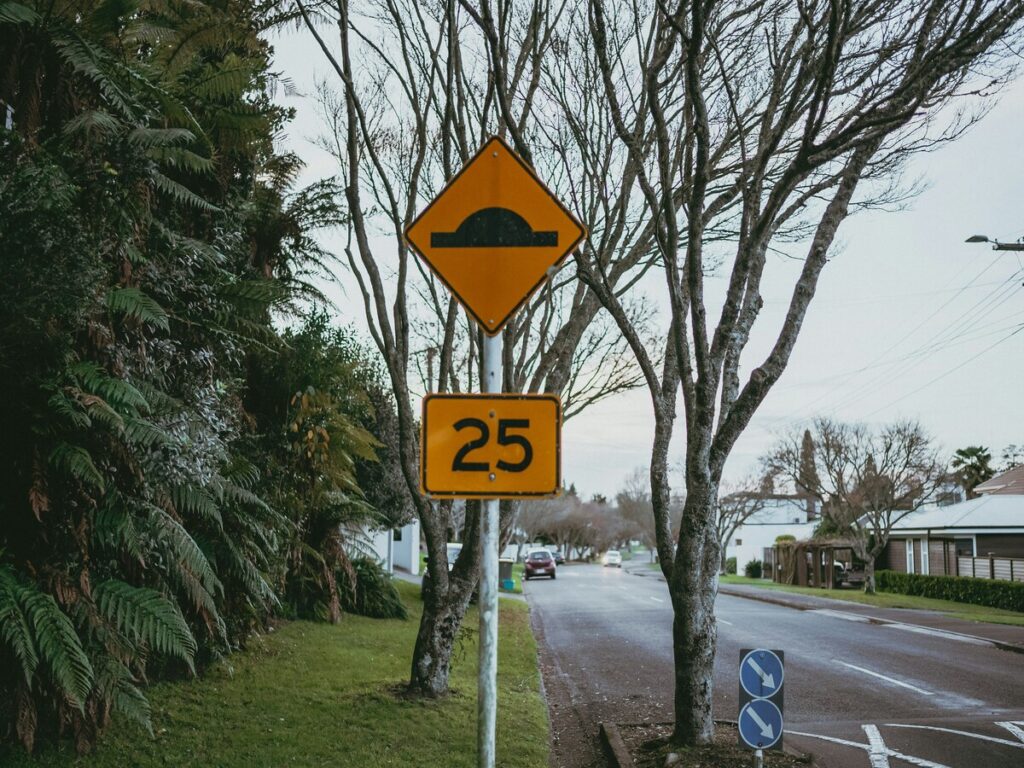
आकार और रंग
आकार और रंग में मदद करने वाले ड्राइवरों को सड़क यातायात संकेतों को जल्दी से समझते हैं. TFNSW और विकरोड दोनों ऑस्ट्रेलियाई मानक का उपयोग करते हैं 1742, लेकिन कुछ मतभेद दिखाई देते हैं. न्यू साउथ वेल्स में, चेतावनी के संकेतों में अक्सर एक काली सीमा और प्रतीक के साथ एक पीले रंग की पृष्ठभूमि होती है. विक्टोरिया चेतावनी के लिए समान रंगों का उपयोग करता है, लेकिन कुछ संकेत स्थानीय नियमों के कारण थोड़ा अलग लग सकते हैं.
नियामक संकेत, जैसे स्टॉप एंड गिव वे, लाल का उपयोग करें, सफ़ेद, और काला. स्टॉप साइन में हमेशा एक अष्टकोणीय आकार और दोनों राज्यों में एक लाल पृष्ठभूमि होती है. गति सीमा संकेत एक लाल सीमा और काले रंग की संख्या के साथ एक सफेद चक्र दिखाते हैं. ये रंग ड्राइवरों को संकेतों को स्पष्ट रूप से देखने में मदद करते हैं, गरीब मौसम में भी.
टिप्पणी: विक्टोरिया कभी -कभी जोड़ता है “वी” कुछ साइन कोड के लिए उपसर्ग. यह सड़क श्रमिकों और योजनाकारों को यह जानने में मदद करता है कि कौन से संकेत विक्टोरियन नियमों का पालन करते हैं.
प्रतीक और पाठ
सड़क यातायात संकेतों पर प्रतीक त्वरित जानकारी देते हैं. TFNSW और विकरोड दोनों सरल चित्रों का उपयोग करते हैं, पैदल यात्री क्रॉसिंग के लिए चलने वाले व्यक्ति या वाहन से संबंधित चेतावनी के लिए एक कार. ये प्रतीक दोनों राज्यों में समान दिखते हैं, लेकिन विक्टोरिया कभी -कभी स्थानीय परिस्थितियों के लिए अद्वितीय आइकन का उपयोग करता है.
संकेतों पर पाठ पढ़ना आसान होना चाहिए. गति सीमा संकेत बड़ी संख्या में दिखाते हैं, जैसे कि “60” या “100”, ड्राइवरों को अधिकतम गति बताने के लिए. बंद संकेत शब्द का उपयोग करें “रुकना” बोल्ड में, स्पष्ट पत्र. चेतावनी के संकेत जैसे शब्दों का उपयोग कर सकते हैं “विद्यालय” या “वक्र” अतिरिक्त विवरण देने के लिए. विक्टोरिया में, कुछ संकेत विशेष समूहों के हैं, और पाठ में स्थानीय सड़कों के लिए अतिरिक्त निर्देश शामिल हो सकते हैं.
| उदाहरण संकेत | एनएसडब्ल्यू (TFNSW) शैली | विक्टोरिया (विक्रेता) शैली |
|---|---|---|
| गति सीमा | सफेद चक्र, लाल सीमा, काली संख्या | वही, लेकिन हो सकता है “वी” योजनाकारों के लिए कोड |
| रुकना | लाल अष्टकोण, श्वेत पाठ | एक ही आकार और रंग |
| चेतावनी (वक्र) | पीला हीरा, काला तीर | वही, लेकिन आइकन अलग हो सकता है |
फोंट और आकार
सड़क यातायात संकेतों पर फोंट दूर से पढ़ने के लिए स्पष्ट और आसान होना चाहिए. TFNSW एक मानक फ़ॉन्ट का उपयोग करता है जिसे कहा जाता है “1744 के रूप में”, जो बोल्ड और सरल है. Vicroads भी इस फ़ॉन्ट का उपयोग करता है, लेकिन कभी -कभी स्थानीय जरूरतों के लिए आकार या रिक्ति बदल देता है.
साइन आकार सड़क प्रकार पर निर्भर करता है. राजमार्गों पर बड़े संकेत दिखाई देते हैं, जबकि छोटे लोग शहर की सड़कों पर फिट होते हैं. गति सीमा संकेत बड़ी संख्या का उपयोग करते हैं ताकि ड्राइवर जल्दी से सीमा देख सकें. बंद संकेत सुरक्षा के लिए बड़े अक्षरों का उपयोग करें. चेतावनी के संकेत ध्यान आकर्षित करने के लिए बोल्ड प्रतीकों और पाठ का उपयोग करते हैं.
बख्शीश: दोनों राज्य यह सुनिश्चित करने के लिए अपने संकेतों को अपडेट करते हैं कि ड्राइवर उन्हें रात में या खराब मौसम में देख सकते हैं. चिंतनशील सामग्री मदद संकेत दिखाई देती है.
सड़क नियम और प्रवर्तन
एनएसडब्ल्यू रोड नियम
एनएसडब्ल्यू रोड नियम यह निर्धारित करें कि ड्राइवरों को सड़क पर कैसे व्यवहार करना चाहिए. ये नियम ऑस्ट्रेलियाई सड़क नियमों का पालन करते हैं लेकिन स्थानीय आवश्यकताओं के लिए कुछ बदलाव शामिल हैं. NSW में ड्राइवरों को सभी ट्रैफ़िक संकेतों का पालन करना चाहिए, नियामक सहित, चेतावनी, और सूचना संकेत. राज्य गति सीमा दिखाने के लिए स्पष्ट संकेतों का उपयोग करता है, स्कूल क्षेत्र, और विशेष क्षेत्र. NSW में डिफ़ॉल्ट गति सीमाएं हैं 50 निर्मित क्षेत्रों में किमी/घंटा और 100 जब तक संकेत एक अलग सीमा नहीं दिखाते हैं, तब तक ग्रामीण सड़कों पर किमी/घंटा. ड्राइवरों को हमेशा पोस्ट की गई गति सीमा के लिए जांच करनी चाहिए, विशेष रूप से नए क्षेत्रों में प्रवेश करते समय.
एनएसडब्ल्यू में टोल सड़कें पीले रंग की पृष्ठभूमि के साथ लाल संकेतों का उपयोग करती हैं. यह रंग योजना ड्राइवरों को टोल सड़कों को जल्दी से स्पॉट करने में मदद करती है. राज्य मोबाइल स्पीड कैमरों और फिक्स्ड कैमरों का भी उपयोग करता है ताकि यह जांच की जा सके कि ड्राइवर गति सीमा का पालन करते हैं या नहीं. ये कैमरे सड़क के नियमों को लागू करने और क्रैश को कम करने में मदद करते हैं. एनएसडब्ल्यू लर्नर परमिट सिस्टम को सभी लागू सड़क नियमों को सीखने के लिए नए ड्राइवरों की आवश्यकता होती है, ट्रैफ़िक संकेतों को कैसे पढ़ें और उनका पालन करें. शिक्षार्थियों को डिफ़ॉल्ट गति सीमाओं को जानना चाहिए और प्रत्येक संकेत का क्या मतलब है इससे पहले कि वे पूर्ण लाइसेंस प्राप्त कर सकें.
एनएसडब्ल्यू रोड के नियम यह भी कवर करते हैं कि राउंडअबाउट का उपयोग कैसे करें, चौराहों पर रास्ता दें, और बाईं ओर रखें या दाएं संकेत रखें. ये नियम ट्रैफ़िक को सुरक्षित रूप से आगे बढ़ाने में मदद करते हैं. राज्य अपने सड़क नियमों और संकेतों को अपडेट करता है जब नए कानून आते हैं या जब सड़कें बदलती हैं. जुर्माना और अवगुण बिंदुओं से बचने के लिए ड्राइवरों को नवीनतम नियमों के साथ अद्यतित रहना चाहिए.
विक्टोरियन सड़क नियम
विक्टोरियन रोड नियम भी राष्ट्रीय दिशानिर्देशों का पालन करते हैं लेकिन कुछ अनोखी विशेषताएं हैं. विक्टोरिया में ड्राइव करने वाले ड्राइवर टोल सड़कों के लिए गोल्ड लेटरिंग के साथ नीले संकेत देखते हैं. यह NSW में लाल और पीले रंग के टोल रोड संकेतों से अलग है. राज्य गति सीमा दिखाने के लिए स्पष्ट संकेतों का उपयोग करता है, स्कूल क्षेत्र, और निर्माण क्षेत्र. विक्टोरिया में डिफ़ॉल्ट गति सीमाएं हैं 50 निर्मित क्षेत्रों में किमी/घंटा और 100 ग्रामीण सड़कों पर किमी/घंटा, NSW में सीमाओं का मिलान. तथापि, कुछ स्थानीय सड़कों की अलग -अलग सीमाएं हो सकती हैं, इसलिए ड्राइवरों को हमेशा संकेतों की जांच करनी चाहिए.
मोबाइल स्पीड कैमरे और फिक्स्ड कैमरे विक्टोरिया में काम करते हैं. ये कैमरे गति सीमा और अन्य सड़क नियमों को लागू करने में मदद करते हैं. विक्टोरिया में ड्राइव करने वाले ड्राइवरों को राउंडअबाउट के लिए नियमों का पता होना चाहिए, चौराहों, और बाएं रखें या दाएं संकेत रखें. विक्टोरियन रोड नियमों को सभी ड्राइवरों को हर समय संकेतों और संकेतों का पालन करने की आवश्यकता होती है. राज्य कानून या सड़क डिजाइन में परिवर्तन से मेल खाने के लिए अपने नियमों और संकेतों को अपडेट करता है.
विक्टोरियन रोड नियमों में शिक्षार्थी ड्राइवरों के लिए विशेष निर्देश भी शामिल हैं. विक्टोरिया में शिक्षार्थी परमिट प्रणाली गति सीमा के बारे में नए ड्राइवरों को सिखाती है, यातायात संकेत, और सुरक्षित ड्राइविंग आदतें. शिक्षार्थियों को अकेले ड्राइव करने से पहले नियमों पर परीक्षण पास करना होगा. राज्यों के बीच चलने वाले ड्राइवरों को सुरक्षित रहने के लिए संकेतों और नियमों में अंतर सीखना चाहिए.
अनुपालन और दंड
NSW और विक्टोरिया दोनों सड़क नियमों को गंभीरता से लेते हैं. प्रत्येक राज्य में उन ड्राइवरों के लिए सख्त दंड हैं जो नियमों का पालन नहीं करते हैं. NSW में, बाईं ओर रखने या सही संकेत रखने के लिए विफल होने से जुर्माना हो सकता है $272 और 2 डिमेरिट प्वाइंट. दोहराने या गंभीर अपराधों के परिणामस्वरूप लाइसेंस निलंबन हो सकता है. एनएसडब्ल्यू में रोड यूजर्स हैंडबुक इन दंडों और सभी ट्रैफ़िक संकेतों का पालन करने के महत्व को बताती है. सड़क डिजाइनरों को नियमों का पालन करने में मदद करने के लिए सही ढंग से संकेत देना चाहिए.
| राज्य/क्षेत्र | ठेठ ठीक | डिमेरिट प्वाइंट |
|---|---|---|
| एनएसडब्ल्यू | $272 | 2 |
विक्टोरिया में ड्राइवर भी नियमों को तोड़ने के लिए जुर्माना और अवगुण अंक का सामना करते हैं. राज्य यह सुनिश्चित करने के लिए नियमित जांच और कैमरों का उपयोग करता है कि ड्राइवर गति सीमा और अन्य ट्रैफ़िक संकेतों का पालन करते हैं. दोनों राज्यों को ड्राइवरों का पालन करने की आवश्यकता होती है बाएं रखें और दाएं संकेत रखें मध्यस्थता में, द्वीप समूह, और सड़क अवरोध. ड्राइवरों को संकेतों पर तीरों का पालन करना चाहिए और सुरक्षित होने पर बाएं लेन पर लौटना चाहिए.
दोनों राज्यों में साइन रखरखाव महत्वपूर्ण है. एनएसडब्ल्यू और विक्टोरिया अक्सर यह सुनिश्चित करने के लिए अपने संकेतों की जांच करते हैं कि वे स्पष्ट और देखने में आसान हैं. क्षतिग्रस्त या लापता संकेतों को जल्दी से बदल दिया जाता है. यह ड्राइवरों को नियमों का पालन करने में मदद करता है और सड़कों को सुरक्षित रखता है.
टिप्पणी: NSW और विक्टोरिया के बीच यात्रा करने वाले ड्राइवरों को सड़क नियमों में अंतर सीखना चाहिए, रफ्तार का प्रतिबंध, और यातायात संकेत. प्रत्येक राज्य में नियमों को जानने से जुर्माना से बचने में मदद मिलती है और सभी को सड़क पर सुरक्षित रखा जाता है.
साइन प्लेसमेंट और प्रौद्योगिकी

शहरी बनाम ग्रामीण
न्यू साउथ वेल्स और विक्टोरिया दोनों के पास नियम हैं जहां संकेत चलते हैं. वे ऑस्ट्रेलियाई मानक का उपयोग करते हैं 1742 एक गाइड की तरह. NSW में, इन नियमों का हमेशा पालन किया जाता है. संकेत सही आकार और ऊंचाई होनी चाहिए. उन्हें रात में देखना भी आसान होना चाहिए. उदाहरण के लिए, संकेत रोकें NSW में शहरों में हैं 750 मिमी चौड़ा. ग्रामीण इलाकों में या तेज सड़कों पर, वे हैं 900 मिमी चौड़ा. शहर के संकेतों के बारे में रखा जाता है 2.1 मीटर ऊंचा. ग्रामीण स्थानों में, संकेत सेट किए गए हैं 1.5 एम-eters.
विक्टोरिया भी के रूप में उपयोग करता है 1742 और यूनिफ़ॉर्म ट्रैफिक कंट्रोल डिवाइसों का मैनुअल. विक्टोरिया में स्थानीय परिषद यदि आवश्यक हो तो साइन आकार और चमक बदल सकती है. व्यस्त शहर के स्पॉट में, बड़े या उज्जवल संकेतों का उपयोग किया जा सकता है. दोनों राज्यों को नए संकेत लगाने से पहले योजनाओं और परमिट की आवश्यकता है. नीचे दी गई तालिका से पता चलता है कि नियम अलग -अलग कैसे हैं:
| पहलू | न्यू साउथ वेल्स (एनएसडब्ल्यू) | विक्टोरिया (विक) |
|---|---|---|
| नियामक आधार | जैसा 1742, कड़ाई से लागू किया गया | जैसा 1742 & MUTCD, स्थानीय लचीलापन |
| अर्बन स्टॉप साइन आकार | 750 मिमी | 750 मिमी (स्थानीय सड़कें), व्यस्त क्षेत्रों में बड़ा |
| ग्रामीण स्टॉप साइन आकार | 900 मिमी | जरूरत पड़ने पर बड़ा |
| बढ़ती हुई ऊँचाई | शहरी: 2.1 एम, ग्रामीण: 1.5 एम | भिन्न, स्थानीय विवेकाधिकार |
| चिंतनशील सामग्री | मानकों को पूरा करना चाहिए | उच्च गुणवत्ता, स्थानीय अनुकूलन |
इलेक्ट्रॉनिक संकेत
इलेक्ट्रॉनिक संकेतों का उपयोग अब सड़कों पर अधिक बार किया जाता है. TFNSW और VICROADS गति सीमा और चेतावनी दिखाने के लिए इन संकेतों का उपयोग करते हैं. वे ट्रैफ़िक और दुर्घटनाओं के बारे में भी अपडेट देते हैं. ये संकेत बड़ी सड़कों पर पाए जाते हैं, सुरंगों में, और रोडवर्क के पास. वे उज्ज्वल रोशनी और स्पष्ट शब्दों का उपयोग करते हैं. यह ड्राइवरों को खराब मौसम में या रात में देखने में मदद करता है.
स्मार्ट साइनेज
स्मार्ट साइनेज सड़कों को सुरक्षित बनाने के लिए नई तकनीक का उपयोग करता है. TFNSW और विकरोड्स इंटेलिजेंट स्पीड असिस्ट के लिए स्पीड साइन सिस्टम के बाद देखते हैं. आईएसए को काम करने के लिए अपने कैमरों के लिए वास्तविक गति संकेतों की आवश्यकता है. यह देश के क्षेत्रों में बहुत महत्वपूर्ण है जहां डिजिटल सिग्नल कमजोर हैं. यदि गति संकेत गायब हैं, ISA ड्राइवरों की मदद नहीं कर सकता. अध्ययनों का कहना है कि अधिक गति के संकेत विक्टोरिया में कई मौतों और चोटों को रोक सकते हैं. पर्याप्त संकेत नहीं होने का मतलब कम सुरक्षा और अधिक लागत है. TFNSW और विकरोड दोनों अधिक संकेत जोड़ने और स्मार्ट ट्रैफ़िक के लिए डेटा साझा करने के लिए काम कर रहे हैं.
बख्शीश: स्पष्ट और आसानी से देखने के लिए गति संकेत ड्राइवरों और स्मार्ट सिस्टम को नियमों का पालन करने और सुरक्षित रहने में मदद करते हैं.
विशेष क्षेत्र और अद्वितीय संकेत
स्कूल क्षेत्र
स्कूल क्षेत्र स्कूलों के पास बच्चों की सुरक्षा में मदद करें. न्यू साउथ वेल्स और विक्टोरिया दोनों ने इन क्षेत्रों में कम गति सीमा निर्धारित की है. दोनों राज्यों में सड़क के नियमों को स्कूल के समय के दौरान ड्राइवरों को धीमा करने की आवश्यकता होती है. नीचे दी गई तालिका मुख्य समानताएं और अंतर दिखाती है:
| पहलू | न्यू साउथ वेल्स (एनएसडब्ल्यू) | विक्टोरिया |
|---|---|---|
| मानक स्कूल क्षेत्र गति सीमा | 40 सड़कों पर किमी/घंटा 70 किमी/एच या उससे कम; 60 सड़कों पर किमी/घंटा 80 किमी/एच या अधिक | 40 सड़कों पर किमी/घंटा 70 किमी/एच या उससे कम; 60 सड़कों पर किमी/घंटा 80 किमी/एच या अधिक |
| अतिरिक्त गति क्षेत्र | 30 उच्च पैदल यात्री क्षेत्रों में किमी/एच क्षेत्र | विशिष्ट नहीं 30 किमी/एच क्षेत्र |
| छुट्टियों के दौरान प्रवर्तन | स्कूल की शर्तों के दौरान गति सीमा लागू होती है, भले ही स्कूल बंद हों | कोई विशेष अवकाश प्रवर्तन नहीं |
NSW अतिरिक्त का उपयोग करता है 30 व्यस्त स्थानों में किमी/एच क्षेत्र. एनएसडब्ल्यू में सड़क के नियम स्कूल की छुट्टियों के दौरान स्कूल ज़ोन की गति सीमा भी लागू करते हैं. विक्टोरिया के पास यह नियम नहीं है. दोनों राज्य गति में परिवर्तन होने पर दिखाने के लिए स्पष्ट संकेतों का उपयोग करते हैं.
निर्माण क्षेत्र
निर्माण क्षेत्रों को श्रमिकों और ड्राइवरों को सुरक्षित रखने के लिए विशेष संकेत और सख्त सड़क नियमों की आवश्यकता है. विक्टोरिया स्थानीय परिषदों को व्यस्त या अंधेरे क्षेत्रों में बड़े या उज्जवल संकेतों का उपयोग करने की अनुमति देता है. परिषदें पोर्टेबल संदेश संकेतों की ऊंचाई और दूरी भी बदल सकती हैं. NSW साइन साइज़ और प्लेसमेंट के लिए सख्त राष्ट्रीय नियमों का पालन करता है. NSW में स्थानीय परिषदें इन नियमों को नहीं बदल सकती हैं. दोनों राज्य बेहतर दृश्यता के लिए उच्च गुणवत्ता वाले चिंतनशील सामग्री का उपयोग करते हैं.
टिप्पणी: विक्टोरिया का लचीला दृष्टिकोण व्यस्त शहर के क्षेत्रों में मदद करता है, जबकि NSW सभी निर्माण क्षेत्र के संकेतों को राज्य भर में रखता है.
आवासिय क्षेत्र
आवासीय क्षेत्रों में अक्सर चलने या साइकिल चलाने वाले लोगों की रक्षा के लिए गति सीमा होती है. दोनों राज्यों की डिफ़ॉल्ट गति सीमाएँ निर्धारित करते हैं 50 निर्मित क्षेत्रों में किमी/घंटा. विक्टोरिया में कुछ सड़कों पर कम सीमा हो सकती है अगर बहुत से लोग वहां चलते हैं. दोनों राज्यों में सड़क के नियमों को बच्चों के लिए देखने और सभी पोस्ट की गई गति सीमाओं का पालन करने के लिए ड्राइवरों की आवश्यकता होती है. इन क्षेत्रों में संकेत स्पष्ट और देखने में आसान हैं, ड्राइवरों को नियमों का पालन करने में मदद करना.
ड्राइवरों पर प्रभाव
पार-राज्य यात्रा
NSW और विक्टोरिया के बीच यात्रा करने वाले ड्राइवर अक्सर चुनौतियों का सामना करते हैं. सड़क के नियम सीमा पर बदल सकते हैं. जब वे एक नए राज्य में पार करते हैं तो एक ड्राइवर अलग -अलग संकेत या गति सीमा देख सकता है. उदाहरण के लिए, एक व्यक्ति जो एनएसडब्ल्यू शिक्षार्थी परमिट रखता है, उसे नियमों के दोनों सेटों को सीखना चाहिए यदि वे विक्टोरिया में ड्राइव करने की योजना बनाते हैं. कुछ संकेत समान दिखते हैं, लेकिन रंग या शब्दों में छोटे बदलाव भ्रम पैदा कर सकते हैं. जो ड्राइवर इन परिवर्तनों को नोटिस नहीं करते हैं, वे बिना अर्थ के सड़क नियमों को तोड़ सकते हैं. कई ड्राइवरों की रिपोर्ट है कि गति सीमा सीमा के पास जल्दी से बदल सकती है. यह नए संकेतों के लिए देखना और सतर्क रहना महत्वपूर्ण बनाता है.
बख्शीश: ड्राइवरों को राज्यों के बीच यात्रा करने से पहले नवीनतम सड़क नियमों की जांच करनी चाहिए. यह उन्हें जुर्माना से बचने और सुरक्षित रहने में मदद करता है.
चालक जागरूकता
स्थानीय सड़क नियमों के बारे में जागरूकता हर ड्राइवर को मदद करती है. विक्टोरिया में ड्राइव करने वाले लोगों को अद्वितीय संकेतों और गति क्षेत्रों के बारे में जानने की जरूरत है. NSW में, ड्राइवरों को स्कूल क्षेत्रों और निर्माण क्षेत्रों के लिए विभिन्न नियमों का पालन करना चाहिए. एक ड्राइवर जो संकेतों को समझता है वह सड़क पर बेहतर विकल्प बनाएगा. कई ड्राइवर सड़क नियमों में बदलाव के बारे में जानने के लिए ऑनलाइन गाइड या ऐप का उपयोग करते हैं. ये उपकरण ड्राइवरों को अद्यतित रहने में मदद करते हैं. माता -पिता और शिक्षक अक्सर युवा ड्राइवरों को दोनों राज्यों में नियमों के बारे में सिखाते हैं. यह नए ड्राइवरों को आत्मविश्वास महसूस करने में मदद करता है जब वे विक्टोरिया या एनएसडब्ल्यू में ड्राइव करते हैं.
सड़क सुरक्षा अभियान
एनएसडब्ल्यू और विक्टोरिया दोनों सड़क सुरक्षा अभियान चलाते हैं. ये अभियान ड्राइवरों को नए संकेतों के बारे में सिखाते हैं, रफ्तार का प्रतिबंध, और सड़क नियमों में परिवर्तन. सड़क अधिकारी टीवी का उपयोग करते हैं, रेडियो, और अधिक लोगों तक पहुंचने के लिए सोशल मीडिया. वे सुरक्षित ड्राइविंग के बारे में बात करने के लिए स्कूलों का भी दौरा करते हैं. कुछ अभियान उन ड्राइवरों की मदद करने पर ध्यान केंद्रित करते हैं जो राज्यों के बीच यात्रा करते हैं. ये प्रयास ड्राइवरों को विक्टोरिया या एनएसडब्ल्यू में ड्राइव करने से पहले नियमों की जांच करने के लिए याद दिलाते हैं. सड़क सुरक्षा अभियान दुर्घटनाओं को कम करने और सभी को सुरक्षित रखने में मदद करते हैं.
| राज्य | अभियानों का मुख्य फोकस | सामान्य विषय |
|---|---|---|
| एनएसडब्ल्यू | स्कूल क्षेत्र, स्पीड कैमरा | रफ़्तार, लक्षण, जुर्माना |
| विक्टोरिया | स्थानीय संकेत परिवर्तन, सुरक्षित गति | सड़क नियम, सुरक्षा |
सामंजस्य और रुझान
राष्ट्रीय दिशानिर्देश
ऑस्ट्रेलिया चाहता है कि सड़क यातायात संकेत हर राज्य में समान हों. जैसे राष्ट्रीय दिशानिर्देश 1742 और के रूप में/nzs 1906 आकृतियों के लिए नियम निर्धारित करें, रंग, और प्रतीक. ये नियम ड्राइवरों को यह जानने में मदद करते हैं कि संकेतों का क्या मतलब है, यहां तक कि जब वे अन्य राज्यों की यात्रा करते हैं. The 2025 पश्चिमी ऑस्ट्रेलिया में ट्रैफिक मैनेजमेंट कोड ऑफ प्रैक्ट. कई राज्य अब बेहतर सामग्री का उपयोग करते हैं, मजबूत ठंड प्लास्टिक और विशेष पेंट की तरह, इसलिए संकेत लंबे समय तक चलते हैं और देखने में आसान होते हैं. संकेतों पर प्रतीक अब सरल और समझने में आसान हैं. यह पर्यटकों और नए ड्राइवरों की मदद करता है.
टिप्पणी: कुछ पुराने संकेत अभी भी नए नियमों का पालन नहीं करते हैं. अधिकारियों को इन संकेतों की अदला -बदली करनी चाहिए और श्रमिकों को परिवर्तनों के बारे में सिखाना चाहिए.
मानकीकरण प्रयास
ऑस्ट्रेलिया हर जगह सड़क यातायात संकेतों को बनाने के लिए काम करता रहता है. राज्य अंतरराष्ट्रीय नियमों का उपयोग करते हैं आईएसओ 7010 संकेतों को एक जैसे दिखने में मदद करने के लिए. यह सड़कों को सुरक्षित बनाता है, ड्राइवरों को अपना रास्ता खोजने में मदद करता है, और गलतियों को रोकता है. वर्दी संकेत भी सड़क योजनाकारों और आपातकालीन टीमों को अपने काम बेहतर करने में मदद करते हैं. लेकिन अभी भी कुछ समस्याएं हैं. कुछ स्थानों में अभी भी पुराने संकेत हैं जो फीके या नए नियमों का पालन नहीं करते हैं. सभी संकेतों को एक ही समय लगता है, धन, और श्रमिकों के लिए प्रशिक्षण.
- एक ही आकृतियाँ और रंग सड़कों को सुरक्षित बनाते हैं.
- नई सामग्री लंबे समय तक चलने में मदद करती है.
- सरल प्रतीकों को लंबे शब्दों की तुलना में पढ़ना आसान है.
सड़क यातायात संकेतों का भविष्य
स्मार्ट तकनीक बदल जाएगी कि लोग सड़क यातायात संकेतों का उपयोग कैसे करते हैं. न्यू साउथ वेल्स में, सिडनी ने अनुकूली यातायात प्रणाली को समन्वित किया (स्कैट्स) होशियार हो रहा है. यह यातायात को बेहतर तरीके से नियंत्रित करने के लिए सेंसर और कृत्रिम बुद्धिमत्ता का उपयोग करेगा. यह तेजी से यात्राएं कर सकता है, ईंधन बचाओ, और प्रदूषण में कटौती. विक्टोरिया वास्तविक समय में कारों और लोगों को देखने के लिए लिडार सेंसर का परीक्षण कर रहा है. ये सेंसर जरूरत पड़ने पर ट्रैफिक लाइट को जल्दी से बदलने में मदद करते हैं. इन्फ्रारेड और कैमरा डिटेक्टरों के साथ परीक्षण भी हो रहे हैं. विशेषज्ञों को लगता है कि भविष्य के संकेत अधिक डेटा का उपयोग करेंगे और सभी के लिए काम करेंगे, बसों की तरह, साइकिल चालकों, और लोग चलते हैं. डेटा और नए नियमों को साझा करने से इन परिवर्तनों में मदद मिलेगी.
बख्शीश: स्मार्ट संकेत और हरे रंग की सामग्री सभी के लिए सड़कों को सुरक्षित और बेहतर बना देगी.
ड्राइवर देखते हैं कि न्यू साउथ वेल्स और विक्टोरिया में सड़क के संकेत और नियम समान नहीं हैं. ये बदलाव ड्राइविंग को कम सुरक्षित बना सकते हैं, खासकर जब सीमा पार करते हुए. यात्रा करने वाले लोगों को इन बातों को ध्यान में रखना चाहिए:
- सीमा शुल्क अधिकारी आपकी कार में सीमा के पास फल या ताजा भोजन के लिए देख सकते हैं.
- किसी भी भोजन को डालें जो जुर्माना लगने से रोकने के लिए डिब्बे में जल्दी से बंद हो जाता है.
- हमेशा बाईं ओर ड्राइव करें, सीट बेल्ट लगाएं, और गति संकेतों का पालन करें.
- अक्सर ब्रेक लें ताकि आप बहुत थक न जाएं, और जानवरों के लिए बाहर देखो, विशेष रूप से सुबह या दिन में देर से.
- लंबी सड़क ट्रेनों को पार करते समय सावधान रहें.
- गंदगी या दूर-दूर की सड़कों पर गाड़ी चलाने से पहले स्थानीय लोगों से मदद के लिए कहें.
TFNSW और VICROADS मानकों ऑस्ट्रेलिया से नियमों का उपयोग करते हैं. नवीनतम परिवर्तन उनकी वेबसाइटों पर हैं. पाठक अपनी खुद की यात्राओं के बारे में लिख सकते हैं या टिप्पणियों में नियमों को अधिक समान बनाने के लिए विचार दे सकते हैं.
अक्सर पूछे जाने वाले प्रश्न
TFNSW और VICROADS ट्रैफ़िक संकेतों के बीच मुख्य अंतर क्या है?
TFNSW और विकरोड दोनों राष्ट्रीय मानकों का पालन करते हैं. TFNSW कभी -कभी स्थानीय आवश्यकताओं के लिए संकेत बदलता है. विकरोड का उपयोग करता है “वी” कोड और अद्वितीय हस्ताक्षर समूह हैं. दोनों का उद्देश्य सड़कों को सुरक्षित रखना है.
NSW और विक्टोरिया सीमा पर गति सीमा परिवर्तन करें?
हाँ, गति सीमा सीमा पर बदल सकती है. ड्राइवरों को नए संकेतों के लिए देखना होगा. गति सीमाएं गिर सकती हैं या जल्दी बढ़ सकती हैं. एक नए राज्य में पार करते समय हमेशा पोस्ट की गई गति की जांच करें.
इलेक्ट्रॉनिक संकेत ड्राइवरों की मदद कैसे करते हैं?
इलेक्ट्रॉनिक संकेत वास्तविक समय के अपडेट दिखाते हैं. वे दुर्घटनाओं के बारे में चेतावनी देते हैं, गति परिवर्तन, या रोडवर्क्स. ड्राइवर इन संकेतों को स्पष्ट रूप से देखते हैं, खराब मौसम में या रात में भी.
क्या स्कूल क्षेत्र दोनों राज्यों में समान हैं?
| राज्य | विद्यालय क्षेत्र गति | अवकाश प्रवर्तन |
|---|---|---|
| एनएसडब्ल्यू | 40 या 60 किमी/घंटा | हाँ |
| विक्टोरिया | 40 या 60 किमी/घंटा | नहीं |
विद्यालय क्षेत्र गति मैच, लेकिन NSW छुट्टियों के दौरान सीमाएं लागू करता है. विक्टोरिया नहीं है.

